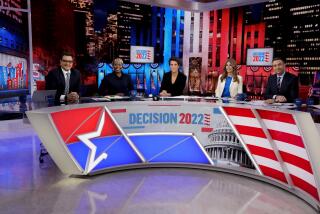You Can Count on This: Reality Is Approximate
- Share via
The closer we look, the fuzzier it gets. The recounts, whether by machine or by hand, whether done in hours or days, deliver different totals than the original vote. But how do we know that the recounts are themselves correct? Would a recount of the recount suffice to settle the score--perhaps best two out of three?
The problem is simple, even if the solution is not: The vote was closer than can be counted without ruling out the possibility of statistically significant error. We have no way to see clearly enough to see who won. The system, mechanical voting machines and computers notwithstanding, is a human one. As such, it is open to error, malfeasance and interpretation. In other words, it is only relatively accurate.
Government, politics and contemporary life seem to have finally caught up with mathematics, science and art. Moving into the 21st century, we are caught in the vortex of post-post modernism, a situation predicted early in the last century. Einstein’s Theory of Relativity states that measurement depends on the relative position of the measurer and changes accordingly. Heisenberg’s Uncertainty Principle tells us that the act of taking measurement irrevocably changes the reality of that being measured.
The ecology of edges, looking through microscopes, telescopes or digital scans, predicts the same result as we are seeing in the nightly news from Florida. What appears as distinct and objective to the naked eye, say black and white, turns out to be a small point of black and one of white with a vast middle of gray moving in either direction.
Artists have been making art about this throughout modernism. To mention but a few obvious examples, the pointillists, the impressionists, mid-20th century artists like Mark Rothko, the op-artists, the current practitioners like Chuck Close, have all demonstrated for us that the world looks categorically different from up close than it does from far away.
We don’t need to be statisticians or mathematicians to understand that numbers only model the universe. They approximate what we call reality, but they can’t replicate it. With the hype of virtual reality swirling all around us, it’s hard to see where the numbers stop and our real reality begins. Yet the world of computers is, after all, just numbers, 1s and 0s, the black dot and the white dot.
The fact is that we will never know who we elected the 43rd president of the United States. It is simply impossible to tell given the blunt instrument of the ballot box by which the issue must be measured.
Introspective artists, scientists and philosophers have queasily learned to live with cosmic uncertainty, the disconnect between what can be known and what must be lived. They have long understood that what you see might not be what you get, and vice versa. They know that technology can produce sublime beauty just as surely as it can create horrible destruction. But it cannot in and of itself create meaning. The technology of computer analysis and/or voting machines cannot, and therefore will not, make sense of this election.
We will just have to live with what it means to have elected “Either/Or” for president of the United States. The man who will be inaugurated in January may be, or may not be, the man actually elected to the post. We will have to live with the fact that the president is unknown.
I believe that this election didn’t fail us, rather that it accurately showed contemporary life as it really is. By looking closely at the results we can’t see who won, but we can see that technology cannot deliver answers. Technology can closely approximate reality, which it does by rounding off, and in this case that just wasn’t good enough.
If we can remember to remember for the next four years that this president, Mr. Assumed President, is a stand-in, maybe he will serve to remind us how much of what we take as reality is itself only an approximation. To make it real, we ourselves have to supply the meaning. To make meaning we have to live as if life counted.






